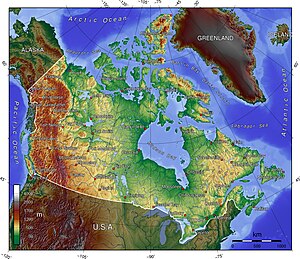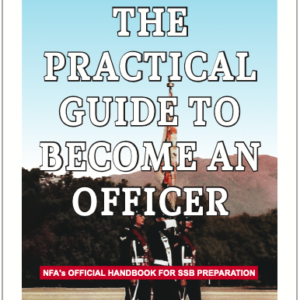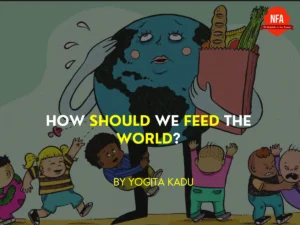‘Tim Hortons’ is to Canada, what ‘Mc Donald’ is to the USA. Ice Hockey is to Canada, what Cricket is to India. In Canada there are two seasons, first is the winter and second is the ‘construction season’ as the country tries desperately to keep pace with the growing population. I spent a few months in Vancouver, Canada in the summer of 2023, a beautiful place with lovely weather. In this blog I share some information I gathered about Canada through reading and observations.
First Impressions
I reached Vancouver in the second week of May 23 from Meerut. I found the weather pleasantly cool, akin to mid-November at Meerut. There was very little dust and practically no flies or mosquitoes. With far lesser pollution, the sky was a darker hue of blue and exposure to direct sunlight could be more hurtful. Despite my son’s advice I managed my stay without using any sunscreen, which I had to do during my high-altitude tenures in Sikkim and Arunachal Pradesh. The streets were wide and traffic uncongested and disciplined. The common areas of our apartment had wall to wall carpeting and air-conditioning. The apartment had 24×7 hot and cold-water supply in all the taps. There was no need to switch on geysers, like at Meerut. Things appeared nice.
Geography
Canada is a very large country by area, approximately 9,984,670 sq km, but the area which is populated is not so large. Practically the entire Canadian population lives within 100 km of the border with the USA. The border with the USA is roughly along the 49-degree North Latitude. Interestingly over 70% of Canadians live South of the 49 degree North Latitude, which are the areas of provinces of Ontario and Québec that includes Toronto, Ottawa, and Montréal.

Of Canada’s thirteen provinces, only two are landlocked, Alberta and Saskatchewan, while the other eleven directly border one of the three oceans.
Canada has the longest coastline in the world, with a total length of 243,042 km. Its border with the USA is the world’s longest land border, stretching 8,891 km.
Canada has over 2,000,000 lakes—which is more than any other country in the world.
History
From the late 15th century, French and British expeditions explored, colonized, and fought over various places within North America in what constitutes present-day Canada. The colony of New France was claimed in 1534 with permanent settlements beginning in 1608. France ceded nearly all its North American possessions to the United Kingdom in 1763.
The Patriation of the Constitution in 1982 marked the removal of legal dependence on the British Parliament. Canada currently consists of ten provinces and three territories and is a parliamentary democracy and a constitutional monarchy.
Over centuries, elements of Indigenous, French, British and more recent immigrant customs have combined to form a Canadian culture that has also been strongly influenced by its linguistic, geographic and economic neighbor, the USA. Since the conclusion of the Second World War, Canadians have supported multilateralism abroad and pursued socioeconomic development.
Demography
Canada has a population of around 4 crores. It is a relatively old country. The average age is 42 years. Life expectancy in Canada in 1947 was over 66 years and today it is above 83 years. Comparable figures for India were 32 years in 1947 and today it is around 70 years. Canada needs young immigrants to work and pay taxes so that the old can be supported and high-quality infrastructure built and maintained. The population growth has been fast, driven far more by immigration than natural growth. Canada also accepts a high number of refugees. It accounts for 10 percent of the annual world refugee settlements. Majority of the immigrants settle in urban centers like Toronto, Montreal and Vancouver.
The country’s ten largest ethnic or cultural origins in 2021 were Canadian (accounting for 15.6 percent of the population), followed by English (14.7 percent), Irish (12.1 percent), Scottish (12.1 percent), French (11.0 percent), German (8.1 percent), Chinese (47 percent), Italian (4.3 percent), Indian (3.7 percent), and Ukrainian (3.5 percent).
Economy
Canada has a highly developed mixed economy. It is the world’s eighth largest economy as of 2022, and a nominal GDP of approximately $ 2.221 trillion. It is one of the world’s largest trading nations, with a highly globalized economy. In 2021, Canadian trade in goods and services reached $2.016 trillion. Canada’s exports totaled over $637 billion, while its imported goods were worth over $631 billion, of which approximately $391 billion originated from the United States. In 2018, Canada had a trade deficit in goods of $22 billion and a trade deficit in services of $25 billion.
It ranks low in the Corruption Perception Index (14th in 2023) and “is widely regarded as among the least corrupt countries of the world”.
Since the early 20th century, the growth of Canada’s manufacturing, mining, and service sectors has transformed the nation from a largely rural economy to an urbanized, industrial one.
Like many other developed countries, the Canadian economy is dominated by services which employ about three-quarters of the country’s workforce. Among developed countries, Canada has an unusually important primary sector, of which forestry and petroleum are the most prominent components.
Canada is one of the few developed nations that are net exporters of energy. Atlantic Canada possesses vast offshore deposits of gas. Alberta hosts the fourth-largest oil reserves in the world. Canada is one of the world’s largest suppliers of agriculture products; the Canadian Prairies are one of the most important global producers of wheat, canola, and other grains. Canada is a leading exporter of zinc, uranium, gold, nickel, platinoids, aluminum, steel, iron ore, coal, lead, copper, molybdenum, cobalt, and cadmium. Canada has a sizable manufacturing sector centered in southern Ontario and Quebec, with automobiles and aeronautics representing particularly important industries. Canada also has a robust fishing industry.
About 4% of Canadians are directly employed in primary resource fields, and they account for 6.2% of the GDP.
There are also many secondary and service industries that are directly linked to primary ones. For instance, one of Canada’s largest manufacturing industries is the pulp and paper sector, which is directly linked to the logging business. In Part II, I shall share my observations about Canada.
Thanks for reading.








